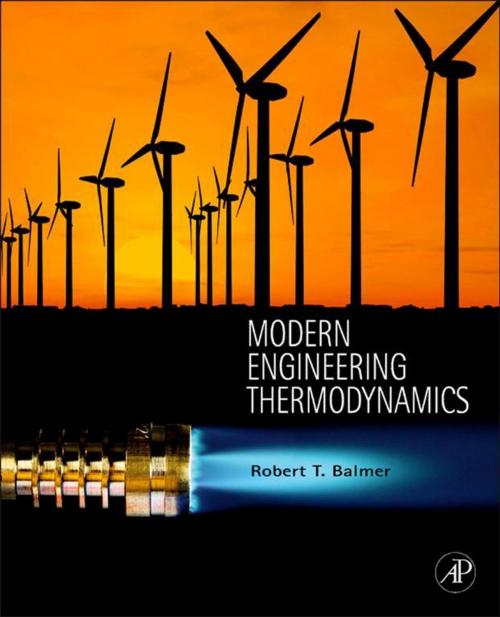Modern Engineering Thermodynamics
Nonfiction, Science & Nature, Science, Physics, Thermodynamics, Technology, Engineering, Mechanical| Author: | Robert T. Balmer | ISBN: | 9780080961736 |
| Publisher: | Elsevier Science | Publication: | January 25, 2011 |
| Imprint: | Academic Press | Language: | English |
| Author: | Robert T. Balmer |
| ISBN: | 9780080961736 |
| Publisher: | Elsevier Science |
| Publication: | January 25, 2011 |
| Imprint: | Academic Press |
| Language: | English |
Modern Engineering Thermodynamics is designed for use in a standard two-semester engineering thermodynamics course sequence.
The first half of the text contains material suitable for a basic Thermodynamics course taken by engineers from all majors. The second half of the text is suitable for an Applied Thermodynamics course in mechanical engineering programs. The text has numerous features that are unique among engineering textbooks, including historical vignettes, critical thinking boxes, and case studies. All are designed to bring real engineering applications into a subject that can be somewhat abstract and mathematical.
Over 200 worked examples and more than 1,300 end of chapter problems provide opportunities to practice solving problems related to concepts in the text.
Provides the reader with clear presentations of the fundamental principles of basic and applied engineering thermodynamics.
Helps students develop engineering problem solving skills through the use of structured problem-solving techniques.
Introduces the Second Law of Thermodynamics through a basic entropy concept, providing students a more intuitive understanding of this key course topic.
Covers Property Values before the First Law of Thermodynamics to ensure students have a firm understanding of property data before using them.
Over 200 worked examples and more than 1,300 end of chapter problems offer students extensive opportunity to practice solving problems.
Historical Vignettes, Critical Thinking boxes and Case Studies throughout the book help relate abstract concepts to actual engineering applications.
For greater instructor flexibility at exam time, thermodynamic tables are provided in a separate accompanying booklet.
Available online testing and assessment component helps students assess their knowledge of the topics. Email textbooks@elsevier.com for details.
Modern Engineering Thermodynamics is designed for use in a standard two-semester engineering thermodynamics course sequence.
The first half of the text contains material suitable for a basic Thermodynamics course taken by engineers from all majors. The second half of the text is suitable for an Applied Thermodynamics course in mechanical engineering programs. The text has numerous features that are unique among engineering textbooks, including historical vignettes, critical thinking boxes, and case studies. All are designed to bring real engineering applications into a subject that can be somewhat abstract and mathematical.
Over 200 worked examples and more than 1,300 end of chapter problems provide opportunities to practice solving problems related to concepts in the text.
Provides the reader with clear presentations of the fundamental principles of basic and applied engineering thermodynamics.
Helps students develop engineering problem solving skills through the use of structured problem-solving techniques.
Introduces the Second Law of Thermodynamics through a basic entropy concept, providing students a more intuitive understanding of this key course topic.
Covers Property Values before the First Law of Thermodynamics to ensure students have a firm understanding of property data before using them.
Over 200 worked examples and more than 1,300 end of chapter problems offer students extensive opportunity to practice solving problems.
Historical Vignettes, Critical Thinking boxes and Case Studies throughout the book help relate abstract concepts to actual engineering applications.
For greater instructor flexibility at exam time, thermodynamic tables are provided in a separate accompanying booklet.
Available online testing and assessment component helps students assess their knowledge of the topics. Email textbooks@elsevier.com for details.















